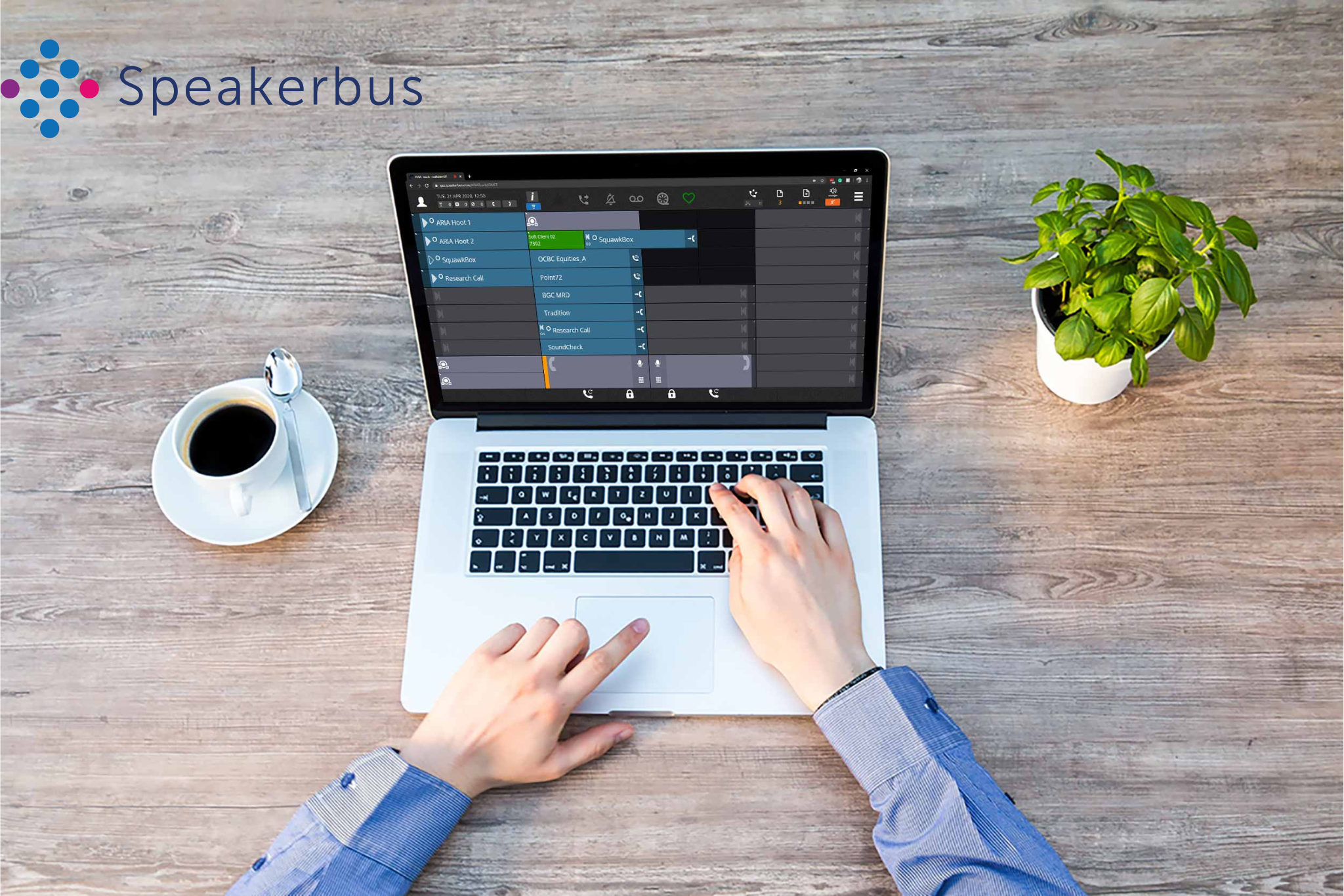
Most modern capital markets firms require a well-managed virtual trading floor. The concept of the virtual trading floor is not new but the increase in remote trading and the fast growth of the hybrid working environment have changed the game.
In a post-pandemic world, the way capital markets operate is evolving quickly, which puts pressure on firms to keep up and ensure their traders have the tools and technology required to meet new demands. Can your IT infrastructure support an increasingly remote and mobile workforce whilst remaining compliant with the latest regulatory obligations?
We explore the factors that determine whether or not your systems can support your virtual trading floor effectively long-term.
The shift to a hybrid working model
Although most businesses have had a partial or full return to offices, a hybrid working model has become commonplace in the wake of the global pandemic.
The move to remote working was a swift one and so many firms weren’t prepared. For example, according to Accenture’s 2021 survey of firms in London markets, 40% of firms had zero remote working provisions before Covid-19.
A lot has changed since then, including work-life balance considerations, heightened expectations of flexible working capabilities and the rise in demand for digital transformation. And while many staff have returned to offices and traditional trading floors, most firms now have an adjusted disaster recovery plan, including remote working considerations and cloud-based solutions to ensure trading efficiency and network uptime are ensured in the event of similar crises or unexpected scenarios.
Is your firm prepared for changing demands of the virtual trading floor?
One of the biggest changes is incorporating a virtual trading floor that runs remotely. Is your firm’s IT infrastructure up to the task? It’s not just about the technology - your infrastructure needs to be able to consolidate data, processes and systems to maintain both high performance and compliance.
The capital markets sector has seen an increase in market abuse due to the shift to remote work. As such, there is increased scrutiny over traders’ conduct and firms’ processes. We explore this in our article on how Speakerbus helps traders work remotely and stay compliant.
Global regulations are changing in line with this. For instance, the FCA updated its rules around the capture and recording of trading communications. Firms need to keep up with the latest regulatory changes and ensure IT infrastructure capabilities enable swift policy updates, processes consistency and demonstrable compliance.
The market has also changed. A growing digital population looking for alternative methods of saving has increased trading activity and new retail investors.
As a result of this increased demand, firms must be prepared to offer the best service possible.
4 signs your IT infrastructure is no longer fit for purpose
To determine whether your firm has the capabilities to handle the demands of your virtual trading floor long-term, we’ve outlined the key signs your IT infrastructure is no longer fit for purpose.
Reliance on physical servers for mission-critical operations
If you’re relying on physical hardware to prop up your mission-critical applications and data centres you could run into problems. It’s hard to replicate these in a remote setting and there is always going to be a single point of failure.
Whilst you could use a physical server to host operations remotely, you need to ensure continuity and resilience. This can’t be guaranteed and isn’t the most reliable solution for operations which demand constant uptime.
Compliance regulations not being met
As we mentioned, one of the biggest challenges to firms right now is regulatory change. New regulations and increased scrutiny on financial institutions, including stricter requirements around the capture and processing of trading communications and transactional data, put firms at greater risk of non-compliance.
Breaches and subsequent fines can be costly (both in terms of financial and reputational damage), and with more people working remotely, it heightens the risk of non-compliance and market abuse. If you’re not confident that your IT infrastructure gives you the required visibility to control and monitor activities, or the ability to demonstrate compliance to auditors, then you need to act and seek solutions that can bolster your compliance.
Downtime is happening too frequently
For successful firms in the capital markets, downtime is not an option. With traders having to divide time between the office, at home and in the field, uptime in uncontrolled environments can’t always be guaranteed. Therefore, it’s paramount that you arm your team with the most reliable network solutions and communications devices and capabilities to handle remote trading demands.
Downtime means loss of opportunities and revenue, with serious money at stake with just minimal delays, latency or loss of connection during communications. If downtime is plaguing your firm, your network infrastructure needs addressing.
Cyber security presents unnecessary vulnerabilities
A common concern with remote working is the increase in vulnerable endpoints that it creates in your organisation. There was a significant increase in cybercrime during the pandemic, with criminals attempting to exploit the rise in remote working and associated opportunities.
Prioritising cyber security for your organisation is essential. If you can’t guarantee a high degree of safety from attacks, then you aren’t in the best position to serve your clients.

How to meet the needs of an effective virtual trading floor
So, how do you make sure your virtual trading floor can sustain a remote workforce and keep you connected and compliant?
Here are a few key ways to ensure your firm meets the needs of the modern virtual trading floor.
Embrace cloud communications software
Adoption of cloud-based software and unified communications tools has become widespread with Gartner predicting that enterprise spending on cloud platforms will increase by 15% by 2024. UC providers like Cisco and Microsoft, as well as accompanying productivity software suites, are transforming firms’ efficiency and performance. Whilst Accountancy and HR solutions are also increasingly cloud-first solutions.
Cloud communications solutions offer various benefits, including:
- Being accessible from anywhere you have a decent internet connection.
- Enabling seamless trading communications, wherever traders are operating.
- Shifting the responsibility of maintenance to the vendor, freeing up IT resources.
But that just scratches the surface. We recommend using sector-specific applications that empower firms to achieve real-time, compliant trading communications.
Learn more in our blog on choosing between on-premise and cloud unified communications .
Increase infrastructure resilience with low latency solutions
In a mission-critical sector like capital markets, unnecessary disruption can cause serious issues for business. Part of this is down to the broadband package people are using at home. But it can be improved by investing in quality hardware for your employees and having resilient IT in the office. This will ensure latency is low when accessing company servers via VPN and deals can be done without disruption.
You can also reduce the hardware footprint in locations where communication is critical by using specialist telephony solutions that use corporate WAN.
Company-wide cyber security
For a virtual trading floor to remain compliant, it needs to be secure. And with capital markets being a prime target for cyber-crime, you need to implement a company-wide solution.
This means having centrally managed software with comprehensive firewalls that secure all your endpoints from malware. However, you also need employee buy-in to your security protocols. Implementing compliance training across your organisation is one way of doing this.
But it’s not just about specific security software. Mission-critical trading applications should have in-built security features, such as multi-factor authentication and data encryption, ensuring that customer details and funds are safe.
Create a comprehensive disaster recovery plan
Most businesses have a disaster recovery plan but very few will have factored a global pandemic and lockdowns into theirs before it occurred.
Any effective trading firm will have considerations for how to continue operating should a major world event like this happen again. And people need confidence that they can carry on their important work regardless of what’s going on in the outside world.
‘Always on’ services that reroute your IP to a disaster recovery location mean that there is no switch over or dead space. Another important feature of this plan should be providing ways for remote users to gain ‘soft access’ to your critical applications should they have an unexpected need to work remotely.
Future-proof your virtual trading floor with digital transformation
Digital transformation is becoming a mature approach for firms in financial services and embracing cloud communications solutions is an inevitability. Having cloud-based applications and remote architecture gives your workforce more flexibility and reduces downtime. But ensuring that these systems also achieve the lowest possible latency and that employees have reliable network connectivity is key.
It’s time to overhaul legacy systems and implement new solutions to future-proof your virtual trading floor, empower trading in a hybrid era, enhance compliance capabilities and ensure you don’t fall behind the competition.
If you want to find out more about how capital markets firms are embracing digital transformation and adapting to the new normal, we recommend having a read of our recent whitepaper.



